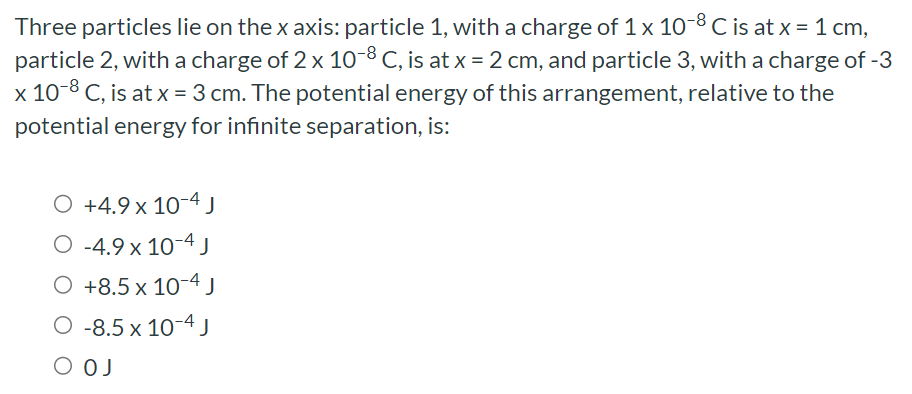Three particles lie on the x axis: particle 1 , with a charge of 1×10−8 C is at x = 1 cm, particle 2 , with a charge of 2×10−8 C, is at x = 2 cm, and particle 3 , with a charge of -3 x10−8 C, is at x = 3 cm. The potential energy of this arrangement, relative to the potential energy for infinite separation, is: +4.9×10−4 J −4.9×10−4 J +8.5×10−4 J −8.5×10−4 J 0 J
